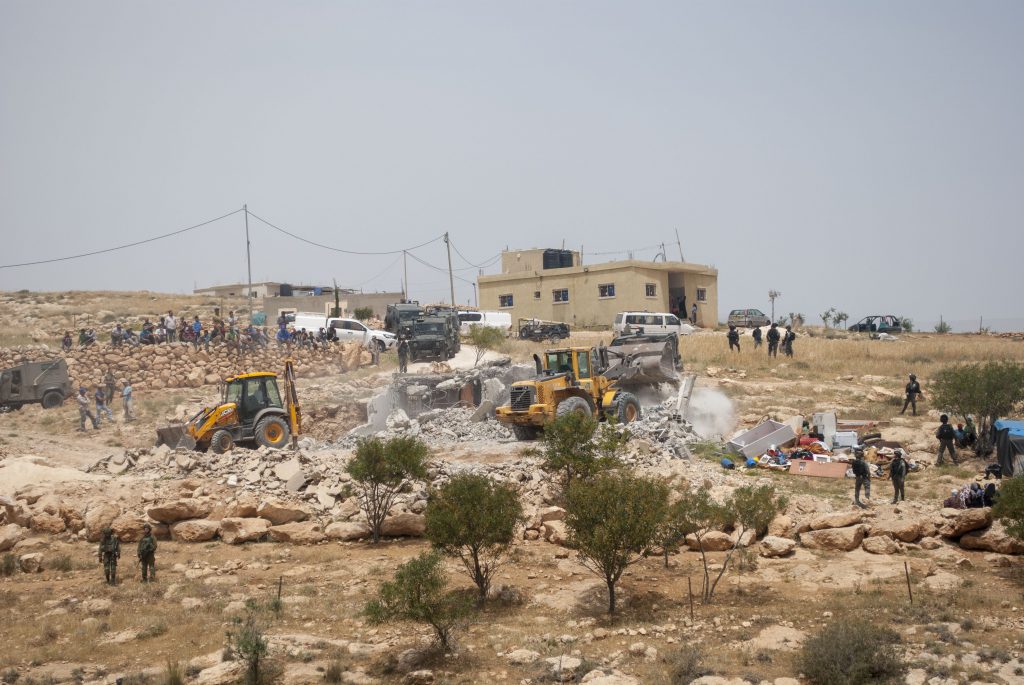
Palestinians in the South Hebron Hills live under Israeli military occupation in Area C, an area making up 61% of the West Bank and lacking the right to self-governance. Israel does not fulfill its international obligation as occupier to provide these 300,000 Palestinian residents with basic needs like electricity and water, and the Israeli Civil Administration turns down over 98% of Palestinian building permit requests in Area C. When Palestinians build homes, sewage lines, infirmaries, or schools without permits, the buildings are subject to demolition by Israeli bulldozers without notice. According to the Israeli Committee Against House Demolitions, the Israeli Civil Administration has demolished 55,000 homes in the Occupied Territories since 1967. Israeli settlements and outposts deemed illegal by international law continue to swell in the shadows of this rubble. Imagine a Palestinian child going to sleep in the South Hebron Hills, unsure if they’ll be woken up by a bulldozer in their living room. Imagine a teacher in the same home, unsure if their classroom will exist come morning. Demolitions in Area C have far-reaching consequences beyond destroying the material safety of a roof and walls, affecting education, mental health, and sanitation. How are communities responding to ever increasing demolitions? Palestinians in the South Hebron Hills are sharpening their storytelling skills—in English—as a tool to educate the public and build international resistance against demolition and occupation. Under olive trees and temporary tent structures, a group of predominantly Jewish internationals are facilitating English storytelling classes in the South Hebron Hills at the request of Palestinian women and men, coordinated by the Jerusalem-based volunteer program Achvat Amim: Solidarity of Nations. I was one of four facilitators in our pilot semester of class last spring, held at night after breaking the Ramadan fast with our storytellers. The following stories were recorded after our first four sessions, and as you’re reading today, 17 Palestinian villages in the South Hebron Hills face complete demolition. Elias Newman
—
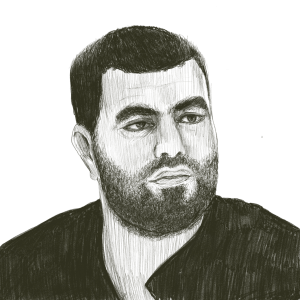 My story is my father’s story. In 1948, there was the Nakba, when the Israeli occupation of Palestine began. My grandfather carried my father in his arms from his village and came to Susiya. In that time, my grandfather had hope that he would return to our village and said to my father, “This will be, yani, for some days, weeks, months until we come back.” They have not returned to this day. It also happened to me. My mother gave birth to me in the old cave of Susiya in 1982. After four years, the same. What happened to my father, happened to me. My father had to carry me in his arms from the village to agricultural land, and we stayed there. And my father had hope, like my grandfather, to go back with our family to our home at our cave. But this has not happened to this day. Today, I have my daughter Dalia, four years old, and the Israeli occupation also tried to evict us, to displace us from our village. I don’t want what happened to me and what happened to my father to happen to my daughter. Nasser Nawaja
My story is my father’s story. In 1948, there was the Nakba, when the Israeli occupation of Palestine began. My grandfather carried my father in his arms from his village and came to Susiya. In that time, my grandfather had hope that he would return to our village and said to my father, “This will be, yani, for some days, weeks, months until we come back.” They have not returned to this day. It also happened to me. My mother gave birth to me in the old cave of Susiya in 1982. After four years, the same. What happened to my father, happened to me. My father had to carry me in his arms from the village to agricultural land, and we stayed there. And my father had hope, like my grandfather, to go back with our family to our home at our cave. But this has not happened to this day. Today, I have my daughter Dalia, four years old, and the Israeli occupation also tried to evict us, to displace us from our village. I don’t want what happened to me and what happened to my father to happen to my daughter. Nasser Nawaja
—
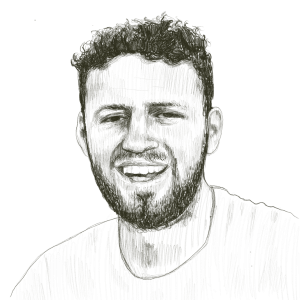 In 1999, 12 Palestinian communities in the South Hebron Hills were evicted. This area is close to the southern border of the Green Line and the Israeli occupation wanted to connect this land to Israel. Then, in 2006, they built a low security wall along Route 317, all the way from Ma’on to Susiya, which really disconnects this area from the big town of Yatta. Life became very hard because, without access to Yatta, people in the area couldn’t get water and other life necessities. The people in our area chose non-violent resistance to protest this wall. Everyone—men, women, and children—went down to block the Route and protest, demanding they remove this wall that cuts off our lives from our relatives in Yatta and from the city in general. My father was one of the leaders of this first demonstration. I was really young at that time, maybe seven or eight years old. I was at school during the first demonstration against the wall. My father, my uncle, our neighbors, and people from other villages were arrested. And my father was beaten very badly. A girl came running into the school yelling, “They beat your father!” I started running out of the classroom all crazy. I didn’t know what to do, and then I just started running in the direction of the demonstration. I only got half the way there when the teacher running after me caught up and brought me back to the class. I was really crying hard. Imagine a child in that moment. I kept my head down the rest of class until I went home. And then I asked my mother, “Where’s my father? When is he coming back?” At that moment, you feel everything stop. My father was away from the house for two weeks in prison and it was very depressing for me. The demonstrations kept going against the wall even when he and the others were in prison. But that was the beginning for me, watching the resistance and learning of my situation. Sami Huraini
In 1999, 12 Palestinian communities in the South Hebron Hills were evicted. This area is close to the southern border of the Green Line and the Israeli occupation wanted to connect this land to Israel. Then, in 2006, they built a low security wall along Route 317, all the way from Ma’on to Susiya, which really disconnects this area from the big town of Yatta. Life became very hard because, without access to Yatta, people in the area couldn’t get water and other life necessities. The people in our area chose non-violent resistance to protest this wall. Everyone—men, women, and children—went down to block the Route and protest, demanding they remove this wall that cuts off our lives from our relatives in Yatta and from the city in general. My father was one of the leaders of this first demonstration. I was really young at that time, maybe seven or eight years old. I was at school during the first demonstration against the wall. My father, my uncle, our neighbors, and people from other villages were arrested. And my father was beaten very badly. A girl came running into the school yelling, “They beat your father!” I started running out of the classroom all crazy. I didn’t know what to do, and then I just started running in the direction of the demonstration. I only got half the way there when the teacher running after me caught up and brought me back to the class. I was really crying hard. Imagine a child in that moment. I kept my head down the rest of class until I went home. And then I asked my mother, “Where’s my father? When is he coming back?” At that moment, you feel everything stop. My father was away from the house for two weeks in prison and it was very depressing for me. The demonstrations kept going against the wall even when he and the others were in prison. But that was the beginning for me, watching the resistance and learning of my situation. Sami Huraini
—
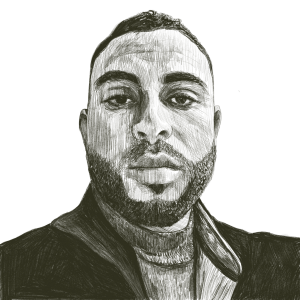 I want to tell you my story about demolition. When I was seven years old, I saw the first demolition in my village of Tuba. The village of Tuba is one of the villages of Masafer Yatta—south of Hebron in Area C—under Israeli military and civil control. One day, when I was on the way back to my house, I was shocked by the large number of military jeeps and soldiers carrying weapons at the entrance of my village. It was the very first time I saw such a large bulldozer in my life. I heard screaming and a loud noise. When I entered the village, I couldn’t find my house. I was shocked by the fact that there was no village at all. They demolished all the houses. At that time, I remember that a number of people were arrested. All of this violence, demolition, confiscation, and these arrests are still used as a means of putting pressure on the villages to leave their land. At that time, I remember we stayed for more than two weeks without any food and clothing. Even after this harassment, my village still exists and we still live there, facing the problems that come from settlers and the army. Ahmed Jundeya
I want to tell you my story about demolition. When I was seven years old, I saw the first demolition in my village of Tuba. The village of Tuba is one of the villages of Masafer Yatta—south of Hebron in Area C—under Israeli military and civil control. One day, when I was on the way back to my house, I was shocked by the large number of military jeeps and soldiers carrying weapons at the entrance of my village. It was the very first time I saw such a large bulldozer in my life. I heard screaming and a loud noise. When I entered the village, I couldn’t find my house. I was shocked by the fact that there was no village at all. They demolished all the houses. At that time, I remember that a number of people were arrested. All of this violence, demolition, confiscation, and these arrests are still used as a means of putting pressure on the villages to leave their land. At that time, I remember we stayed for more than two weeks without any food and clothing. Even after this harassment, my village still exists and we still live there, facing the problems that come from settlers and the army. Ahmed Jundeya
—
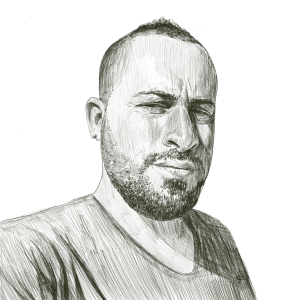 I want to talk about my village, my old village. My family was living in old Susiya in houses made of stones and caves. They lived in these. Occupation soldiers came one day and expelled my family to the village road outside, and then they moved us to live in tents. The tents did not protect us from hot summer or cold winter. Life there became very difficult. We started from zero to rebuild our village, constructed out of tents. But the Occupation would not leave us alone. The first year I went to school was 1997. I woke up at five o’clock every day so that I was able to go to school on foot. And one day, I woke up as usual, but there was something different. I found Israeli occupation soldiers outside with bulldozers. The soldiers told us, “Just go outside. We want to demolish these tents.” They started demolishing and I watched them destroy my home, with my school books inside. That was the hardest day of my life, now without even the homes of the homeless. Hamdan Balall
I want to talk about my village, my old village. My family was living in old Susiya in houses made of stones and caves. They lived in these. Occupation soldiers came one day and expelled my family to the village road outside, and then they moved us to live in tents. The tents did not protect us from hot summer or cold winter. Life there became very difficult. We started from zero to rebuild our village, constructed out of tents. But the Occupation would not leave us alone. The first year I went to school was 1997. I woke up at five o’clock every day so that I was able to go to school on foot. And one day, I woke up as usual, but there was something different. I found Israeli occupation soldiers outside with bulldozers. The soldiers told us, “Just go outside. We want to demolish these tents.” They started demolishing and I watched them destroy my home, with my school books inside. That was the hardest day of my life, now without even the homes of the homeless. Hamdan Balall
—
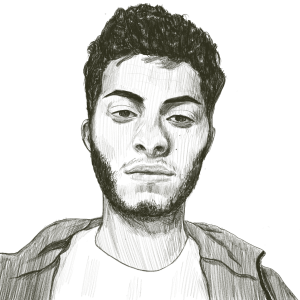 I want to speak about one life necessity: electricity. For a long time, because of the Occupation, the village Al-Tuwani in the South Hebron Hills didn’t have electricity. Electricity is a life necessity that you need for light, cold water, cleaning, schools, et cetera. In this village, we didn’t have electricity, so we started to look for a solution. We bought a generator just to have a few hours of electricity at night. But this generator was not enough for the village and the people, providing only a few hours of light, not enough for water, washing machines, and other things that people need. After that, we started to bring electrical towers without permission from the Occupation. When we brought the towers past the road—it was raining and very cold—the military came with trucks to confiscate them. All the people from the village—men, women, children—went down to the street where there were soldiers and border police and the trucks they brought to confiscate the towers. We went down, all the people, and we stopped in front of the jeeps and blocked the road in front of them with stones. We didn’t let them move or continue to confiscate the towers. They confiscated just three, but we blocked the road from the Al-Tuwani side where the towers came from. After that, they couldn’t do anything further because people were in front of the jeeps blocking the road. So they carried the towers they confiscated away. Then, people started to bring the towers again and we got permission for electricity in 2010. Basel Sulieman Adra
I want to speak about one life necessity: electricity. For a long time, because of the Occupation, the village Al-Tuwani in the South Hebron Hills didn’t have electricity. Electricity is a life necessity that you need for light, cold water, cleaning, schools, et cetera. In this village, we didn’t have electricity, so we started to look for a solution. We bought a generator just to have a few hours of electricity at night. But this generator was not enough for the village and the people, providing only a few hours of light, not enough for water, washing machines, and other things that people need. After that, we started to bring electrical towers without permission from the Occupation. When we brought the towers past the road—it was raining and very cold—the military came with trucks to confiscate them. All the people from the village—men, women, children—went down to the street where there were soldiers and border police and the trucks they brought to confiscate the towers. We went down, all the people, and we stopped in front of the jeeps and blocked the road in front of them with stones. We didn’t let them move or continue to confiscate the towers. They confiscated just three, but we blocked the road from the Al-Tuwani side where the towers came from. After that, they couldn’t do anything further because people were in front of the jeeps blocking the road. So they carried the towers they confiscated away. Then, people started to bring the towers again and we got permission for electricity in 2010. Basel Sulieman Adra